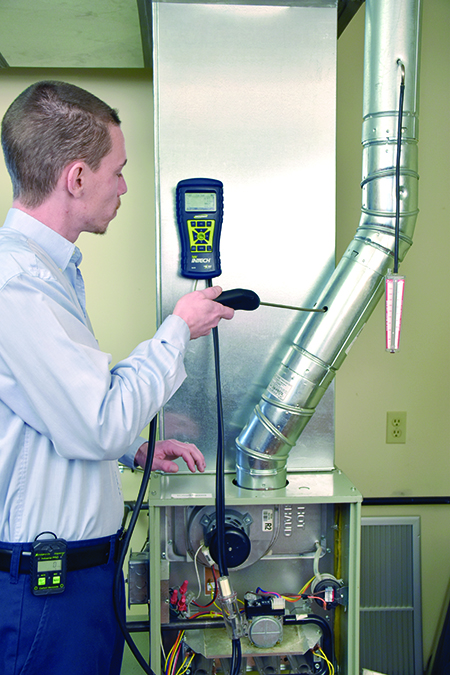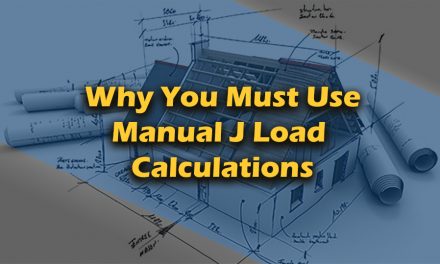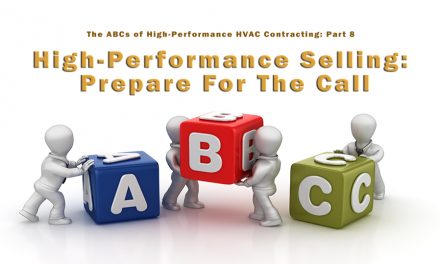The motto at NCI is, “If you don’t measure, you are just guessing.” However, is it possible that you are measuring and still guessing? The answer depends on what you are measuring. Do your measurements have real value, or are they just token readings? Do you fully understand the meaning of specific measurements?
There is an abundance of information available that recommends taking measurements — whether in technical manuals, installation manuals, or on the internet. There is information on venting, combustion air, building depressurization, gas pressure, O2, CO2, CO, flue temperatures, draft, Delta T, and airflow, to mention a few. How much of this is based on theory, opinion, or actual field testing and verification?

Observation Versus Measurement
Something you should eliminate immediately as a diagnostic measurement is smelling!! One recent manufacturer’s installation manual recommends smelling outside and inside their equipment. Another manual tells you to smell the flue cap for proper combustion. Even a gas company wants the installer or service tech to smell around the house for CO!
Fact: smelling for proper combustion is not only guessing but also possibly life-threatening. I would place the other human senses (seeing, hearing, touching, and tasting) under the observation category rather than as measurements.
Let’s start with something as simple as a draft, match, or smoke test. According to many procedures or codes, either test is a method to verify equipment is venting.
In some cases, a certain value is given to the draft reading based on outside temperatures to establish the minimum required draft for proper venting.
No draft test or smoke test can quantify what is going up a flue, much less if the equipment is venting at all. No test is more misleading or dangerous than a smoke test on natural draft equipment with a drafthood. You will only be guessing if this is how you are measuring!
Codes Are Often Not Good Enough

What about combustion air? Based on code, adequate combustion air happens if there is an area of 50 cubic feet or a one-square-inch opening to the outdoors (possibly a high and a low opening) per 1,000 Btus of input. Though this may be the proper area or opening to the outdoors, there is no guarantee that air is getting to the equipment.
A 2000 ASHRAE study and report found that the approved code on passive combustion air – as cited above — fails to perform adequately under many field conditions. We call this another assumption of measurement, and it will leave us guessing!
Gas Pressure: Legit or Not?
Measuring gas pressure is always recommended, but what kind of diagnostic information does this provide? Utility experts often say that tampering with gas pressure is a significant safety detriment.
Ask yourself this: does 3.5-in. w.c. equal a certain amount of Btus? Does this verify a proper fuel/air mixture? What is the Btu content in gas? Do you need to know the actual size of the burner orifices?
Gas pressure is more of a reference number than a valid measurement to verify proper performance. If this is one of the primary measurements on which you base equipment performance, you are guessing.
Guessing Using Delta T?
So far, we are using the measurements recommended by HVAC industry standards or equipment manufacturer specifications.
Another measurement used for furnaces is Delta T or temperature rise.
One would think that in heating mode, the temperature rise would be consistent regardless of the manufacturer, model, or equipment size, much like that of cooling equipment.
But somehow, this is not the case. Depending on furnace size, you’ll find manufacturer-recommended temperature rises in these general ranges:
- 25 to 55 degrees
- 35 to 65 degrees
- 40 to 70 degrees
- Even 50 to 80 degrees.
Click Below for the Next Page:













Love it! I am constantly asking for measurements and I usually get stonewalled because the tech doesn’t know why we should care or that it’s important at all. National Comfort Institute (NCI) has great classes to take your skills to the next level. But don’t forget that your local trainers can help too. Get the basics locally and then take the NCI classes.